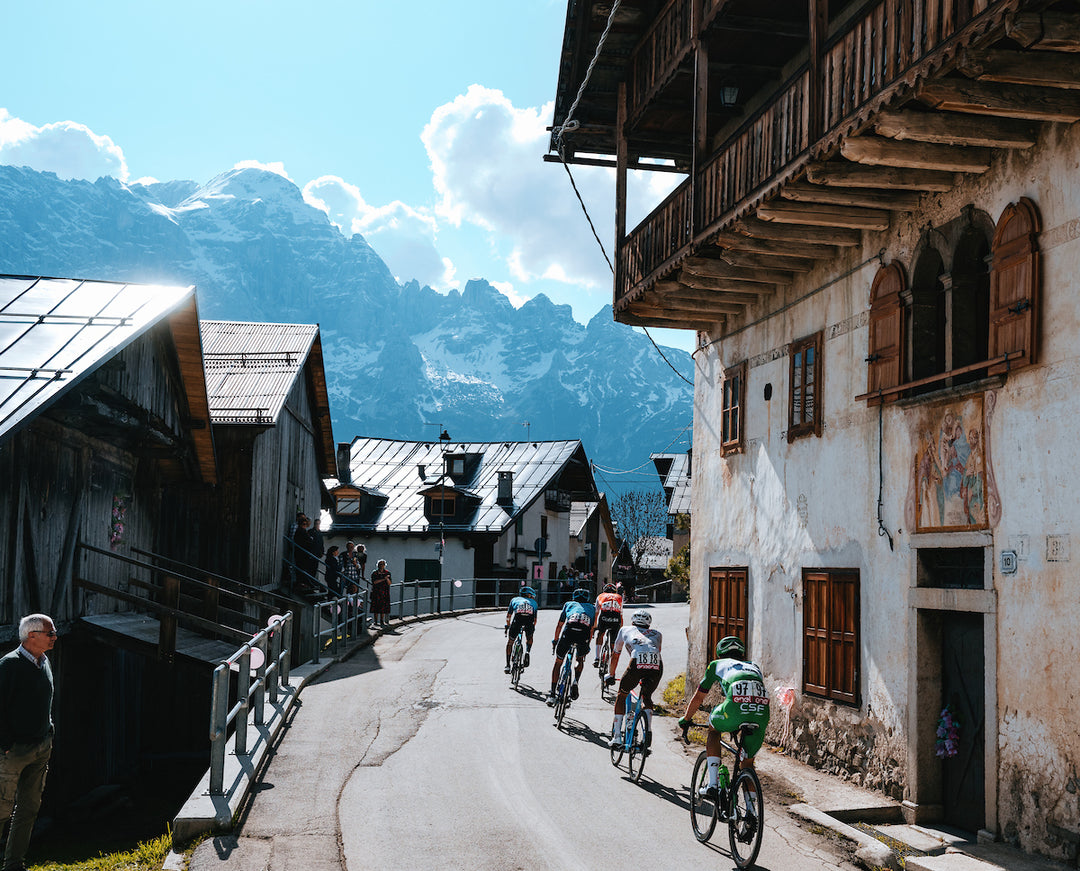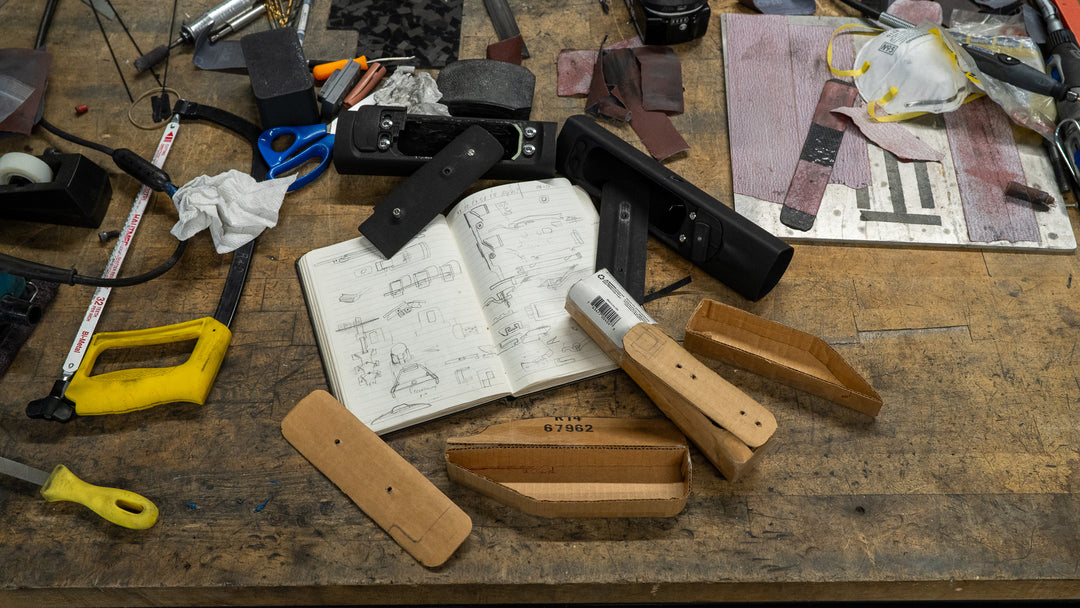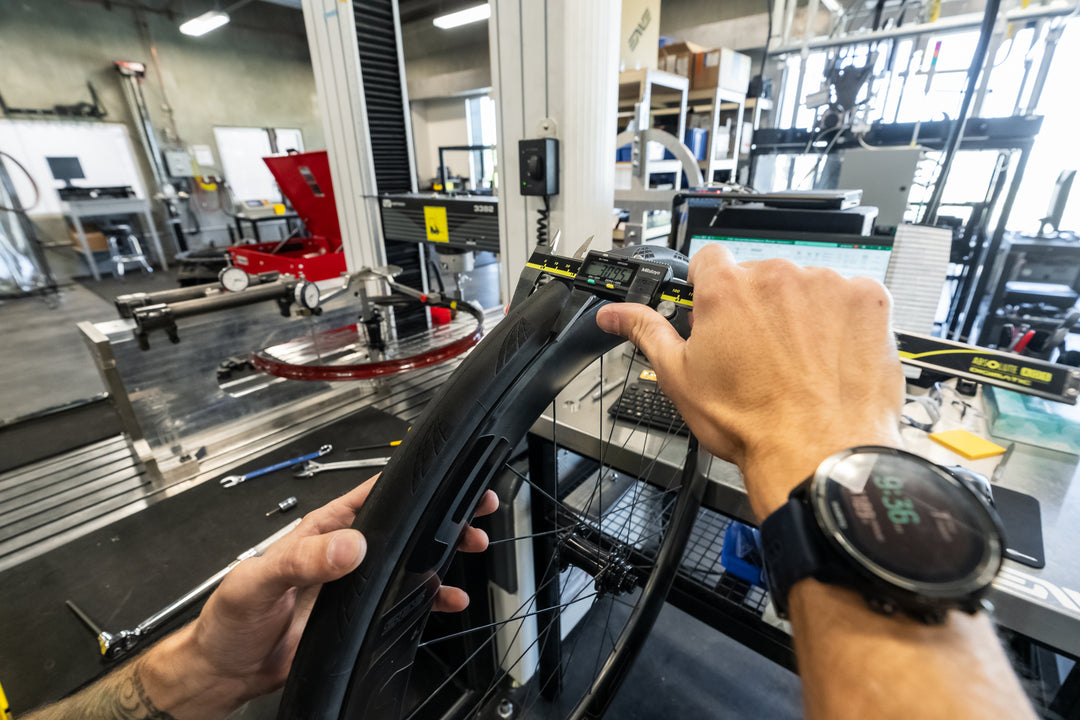ENVE's Gravel Guide
From the smooth dirt roads of Colorado’s SBT GRVL to the unforgiving Flint Hills of Unbound, gravel events have never been so popular. With this boom, we hear many questions about what equipment – wheel, tire size, and even bike type – riders should take on these adventures.
The first thing to note is that unlike the pavement, which is all very similar, gravel and dirt roads vary greatly with geographic location. Each type of gravel or un-paved road has its own ideal equipment. In order to help end the confusion, gravel riding superfan and frequent ENVE Journal contributor Neil Shirley created the Industry Standard Guide to Gravel (ISGG). It defines gravel road difficulty into simple categories and aligns recommended equipment with each.
As this is only a guide, there will be a number of other factors to think about when considering your setup. Your skill level and the event’s ratio of dirt to pavement are two notable aspects. Riders who are less confident riding a drop-bar bike off-road are advised to opt for a more conservative approach and step up one category in equipment. The dirt/asphalt ratio is also key, and The Belgian Waffle Ride is a great example. It features a few off-road sections that would fall under Category 3 and 4, yet because the majority of the route is pavement, the event is considered as Category 2. It’s about striking a balance between efficiency on and off the pavement.

ISGG
Category 1 Gravel
Smooth, well-maintained dirt roads that have either very small gravel chunks or none at all, and are very road bike friendly. These roads are in better condition than many paved roads in the U.S. and are hard-packed, offering little more difficulty than riding on tarmac. There are a number of roads like this in Colorado onto which a magnesium chloride treatment is applied to keep the dust down and harden the top layer of dirt. Cat 1 roads are found in a number of gran fondos and add a little more adventure to the event.
Ideal bike: Road bike
Tire size: 29-32mm
Event Examples: Haute Route Rockies, Tour of the Battenkill
ENVE Insight:
For this type of riding, we want the same aerodynamic efficiency and confidence as on the tarmac. Speeds are often quite high and only minor adaptations are required to standard road equipment in order to achieve a fast pace while maintaining comfort and overall confidence. For Cat 1 Gravel, our SES 3.4 , SES 4.5, and ENVE 45 road wheels fit the bill perfectly.



Category 2 Gravel
Expect potholes, washboard, and probably loose, blown-out corners. There is likely to be gravel outside of the main tire tracks that could cause an extra challenge if your line deviates. A road bike can still cut it, ideally one with greater tire clearance, but more skill is needed when cornering at speed. Increasing the tire size beyond your everyday road set-up is recommended to reduce the risk of pinch-flatting and to benefit from the smoothness of a larger air chamber.
Ideal bike: Endurance/All-Road bike
Tire size: 33-35mm
Event Examples: SBT GRVL, Gravel Worlds, Boulder Roubaix, Belgian Waffle Ride San Diego
ENVE Insight:
The wheelset recommendations made for Cat 1 gravel hold true here as well, although it really starts tipping in favor of the SES 3.4 or the SES 4.5 due to its 25mm inner width and its aero profile, both optimized for 28-32mm tires. Because the SES 3.4 and the SES 4.5 were designed for Team Dimension Data to race at Paris-Roubaix, it’s been a very popular option for Category 2 roads. A 32mm tubeless tire on that rim often measures 34mm or greater once inflated. This offers a higher volume, a larger contact patch, better rolling efficiency on rough surfaces, and allows for lower tire pressure. Depending on rider weight and terrain, you can safely drop under 45psi.




Category 3 Gravel
Infrequently maintained roads that require a high level of skill, made difficult by exposed rocks, rain ruts, sand bogs, and many other unexpected challenges that could arise. Unless a route’s only Cat 3 gravel section is merely a short connector, it’s recommended to step up to a gravel bike on 38-42mm tires with side knobs for the best speed and safety.
Ideal bike: Gravel bike
Tire size: 38-42mm
Event Examples: Rebecca’s Private Idaho, Unbound, The Mid South, Crusher In The Tushar, Rock Cobbler, Gravel MOB
ENVE Insight:
This is the point at which our G23 or AG25 gravel wheel should be selected. Both are purpose-built gravel wheels that are tough but lightweight for a smooth and lively ride. The wheels feature our patent pending Wide Hookless Bead, which dramatically decreases the propensity for pinch-flats. In our testing, we found that flats from large impacts were reduced by more than 50% over previous generation ENVE wheels. Anyone who has spent a lot of time riding gravel, dodging sharp rocks, roots, and potholes knows this is critical. The SES 3.4 still maintains a strong following with riders that are averaging 18+ mph across this challenging terrain since the wheels do provide a slight aero benefit at higher speeds. For most though, the benefits of our gravel-specific wheels outweigh any aero gains.




Category 4 Gravel
Non-maintained surfaces with deep ruts, rock gardens, and potential landslides left for the next gravel rider to stumble upon make these the most challenging of gravel roads. Sticking with high-volume tires will help to cushion the ride, reduce the risk of a pinch-flat, and provide greater traction in the corners as well as on steep, loose climbs.
Ideal bike: Gravel bike
Tire size: 40-42+mm, or 650b wheels with 42+mm tires, 1.9-2.25″ tires
Event Examples: GRODEO, Grinduro, Lost and Found, Rock Cobbler
ENVE Insight:
Some may say that this terrain is perfectly suited to a mountain bike, but we think there are major advantages to the right gravel setup. Any road segments will be better served on gravel tires, and having multiple hand positions on drop bars is huge over long distances. Many of us at ENVE who prioritize speed over all else run the G23 or AG25 paired with a 40-45mm tire. However, the advantage of smaller 650b wheels and larger tires comes into play in these types of rides. A bike such as an Open U.P., 3T Exploro, or other frames designed around smaller wheels provides huge amounts of traction and comfort in extremely rough terrain. It’s a great solution for those committed to riding mountain bike trails on their drop-bar bike. The G27 and AG28 are 27.5/650b wheels that would be a perfect choice here, given the number of tire options available ranging from slicks to full-blown 2.1” mountain bike knobbies.











